Few artists have lived a life as chaotic and intense as Michelangelo Merisi da Caravaggio.
Caravaggio was born in 1571 and died by 1610. Caravaggio’s short life was packed with genius, violence, scandal, and transformation. His dramatic use of light and shadow, raw depictions of humanity, and refusal to romanticize his subjects shook the art world and left a legacy that reshaped Baroque art.
Table of Contents
- Caravaggio – The Making of a Rebel
- Caravaggio – The Style That Changed Everything
- Legacy: The Resurrection of a Rebel
- 10 Most Important Works of Caravaggio
- The Calling of Saint Matthew (1599–1600)
- Judith Beheading Holofernes (c. 1599)
- The Supper at Emmaus (1601)
- Bacchus (c. 1595)
- The Conversion of Saint Paul (1600–1601)
- David with the Head of Goliath (1610)
- The Entombment of Christ (1603–1604)
- Saint Jerome Writing (1605–1606)
- The Seven Works of Mercy (1607)
- Medusa (1597)
- Related Questions
Caravaggio – The Making of a Rebel
Caravaggio was born in Milan but moved with his family to Caravaggio, a small town that would later become his namesake. Orphaned by the age of 11 due to a plague outbreak, Caravaggio became an apprentice to the painter Simone Peterzano in Milan.
By the early 1590s, he had moved to Rome, then the epicenter of artistic patronage, determined to make his name.
But Caravaggio wasn’t like the other artists in Rome. While many painters idealized their subjects, Caravaggio painted the world as he saw it: dirty, brutal, and honest. He chose ordinary people off the streets as models and set biblical stories in gritty, everyday contexts. This realism shocked many but also won him influential admirers.
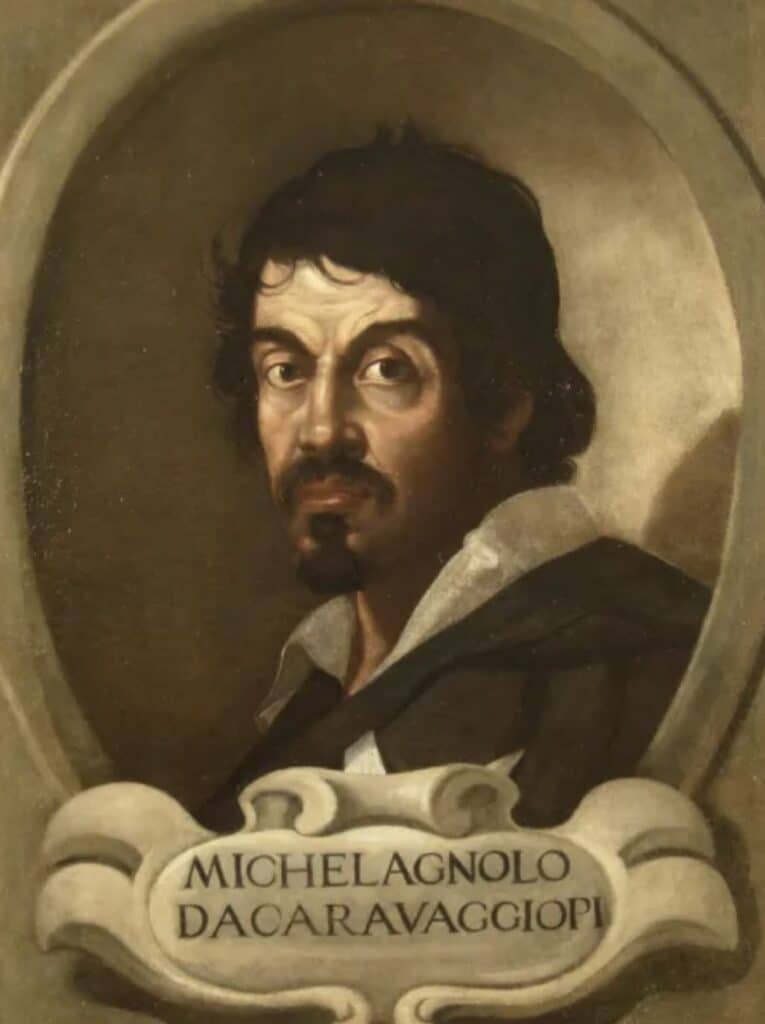
Caravaggio – The Style That Changed Everything
Caravaggio’s technique of chiaroscuro (strong contrasts between light and dark) wasn’t new, but he wielded it like a weapon. His compositions were intense, immediate, and theatrical.
He didn’t just depict scenes; he thrust viewers into the action. This bold style became a cornerstone of Baroque art, influencing countless painters across Europe.
What made his work revolutionary wasn’t just technique, but also his attitude. Caravaggio blurred the lines between the sacred and profane, portraying saints with dirt under their nails and apostles as men you’d avoid in a back alley. His vision was spiritual, yes, but uncomfortably human.
Art and Violence: A Life on the Edge
Caravaggio’s talent brought him fame, commissions, and patrons among Rome’s elite. However, his personal life was a disaster. He was frequently arrested for brawling, carrying weapons illegally, and was sued for libel and assault.
His volatile temper culminated in 1606 when he killed a man—Ranuccio Tomassoni—in a street fight. The reasons are still debated, with theories ranging from a gambling dispute to a clash over a woman.
Condemned to death, Caravaggio fled Rome and began a fugitive existence, traveling through Naples, Malta, and Sicily. Despite his outlaw status, he continued to work, producing some of his most haunting and introspective paintings during this period.
The Mystery of His Death
In 1610, at the age of just 38, Caravaggio died under mysterious circumstances. Some say he succumbed to a fever, others believe he was murdered or poisoned. He died on a beach near Porto Ercole, possibly waiting for a papal pardon that never came. His grave remains unknown.
Even in death, Caravaggio was an enigma.
Legacy: The Resurrection of a Rebel
Caravaggio fell into obscurity after his death. His name was often whispered with disdain, his life held up as a cautionary tale.
But in the 20th century, art historians and critics began to reevaluate his work. They saw in him a precursor to modernity: an artist unafraid of truth, a visual storyteller who laid bare the beauty and brutality of existence.
Today, Caravaggio is celebrated as one of the most important painters in Western art history. His influence is evident in the works of Rubens, Rembrandt, and even contemporary filmmakers who borrow his dramatic lighting and raw emotional depth.
10 Most Important Works of Caravaggio
Here are ten of Caravaggio’s most significant paintings, with reasons why each holds a crucial place in art history:
The Calling of Saint Matthew (1599–1600)
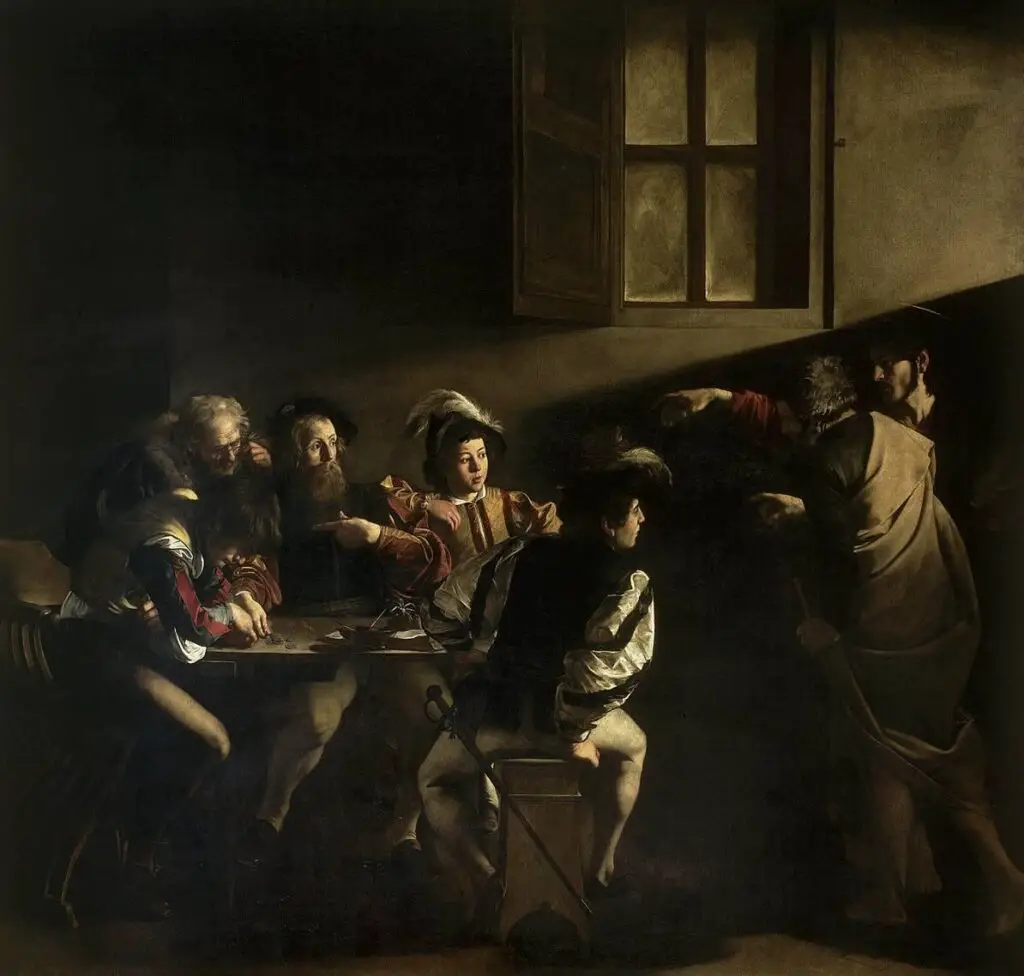
Why it matters: A masterpiece of composition and lighting, this painting captures the exact moment Jesus calls Matthew to follow him. The use of a dark tavern setting and naturalistic figures revolutionized religious painting.
Judith Beheading Holofernes (c. 1599)
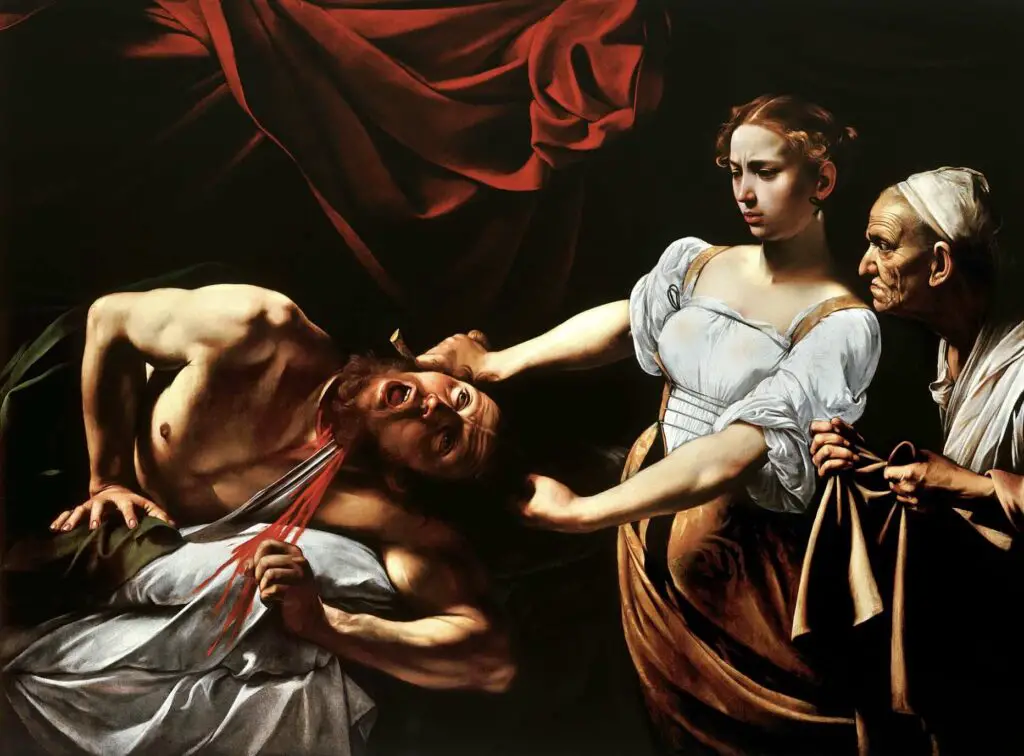
Why it matters: Violent, dramatic, and emotionally charged, this work exemplifies Caravaggio’s use of chiaroscuro and psychological realism. Judith isn’t a passive heroine; she’s deadly and deliberate.
The Supper at Emmaus (1601)
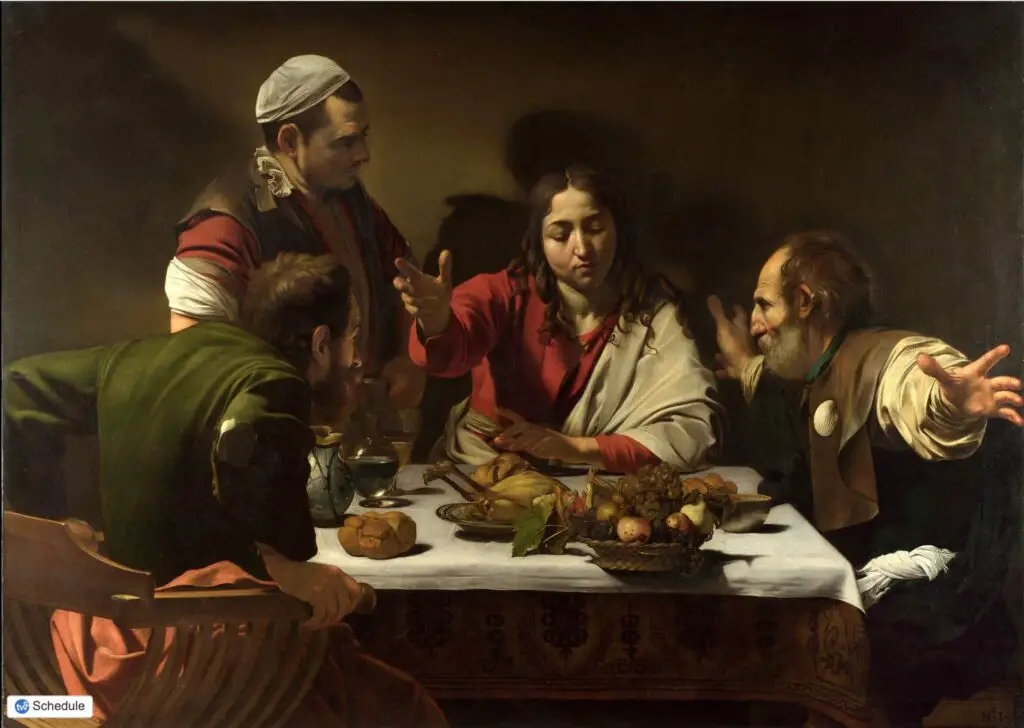
Why it matters: This piece showcases Caravaggio’s command of gesture, composition, and symbolism. The moment of divine recognition is given physical weight and immediacy.
Bacchus (c. 1595)
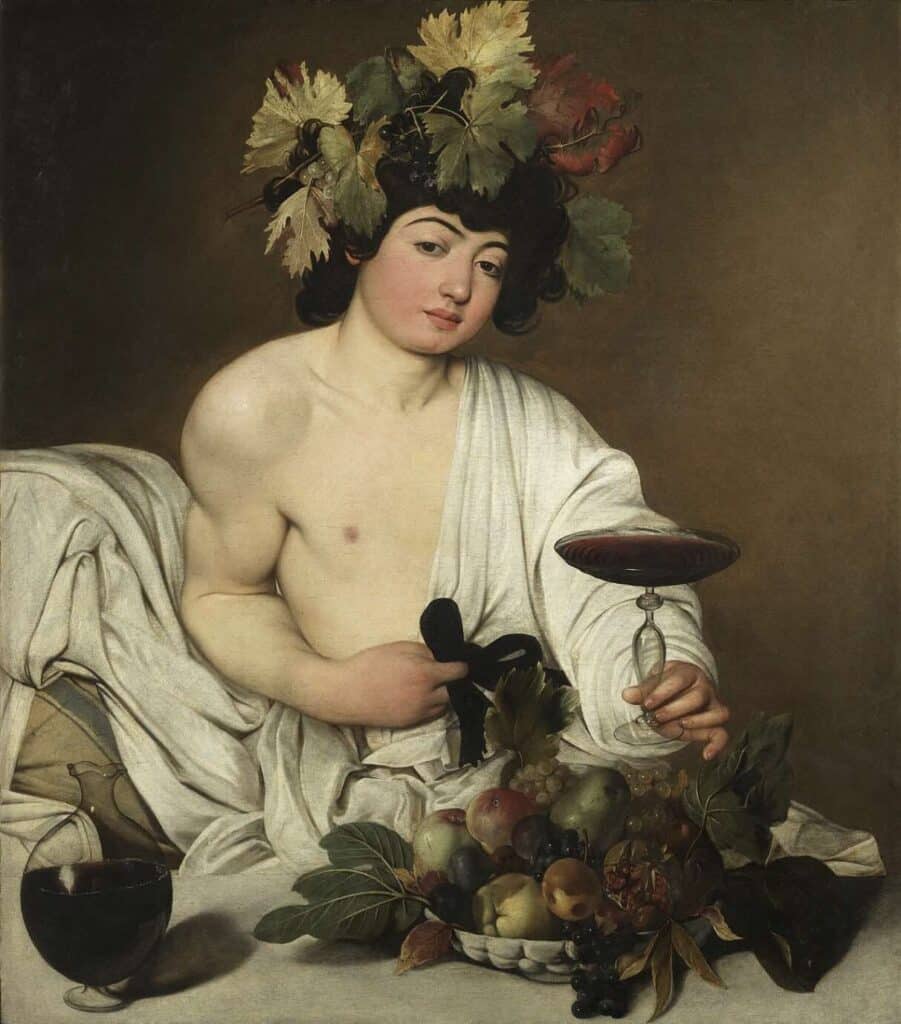
Why it matters: A sensual, subversive depiction of the Roman god of wine, this painting blurs the line between classical mythology and everyday realism.
The Conversion of Saint Paul (1600–1601)
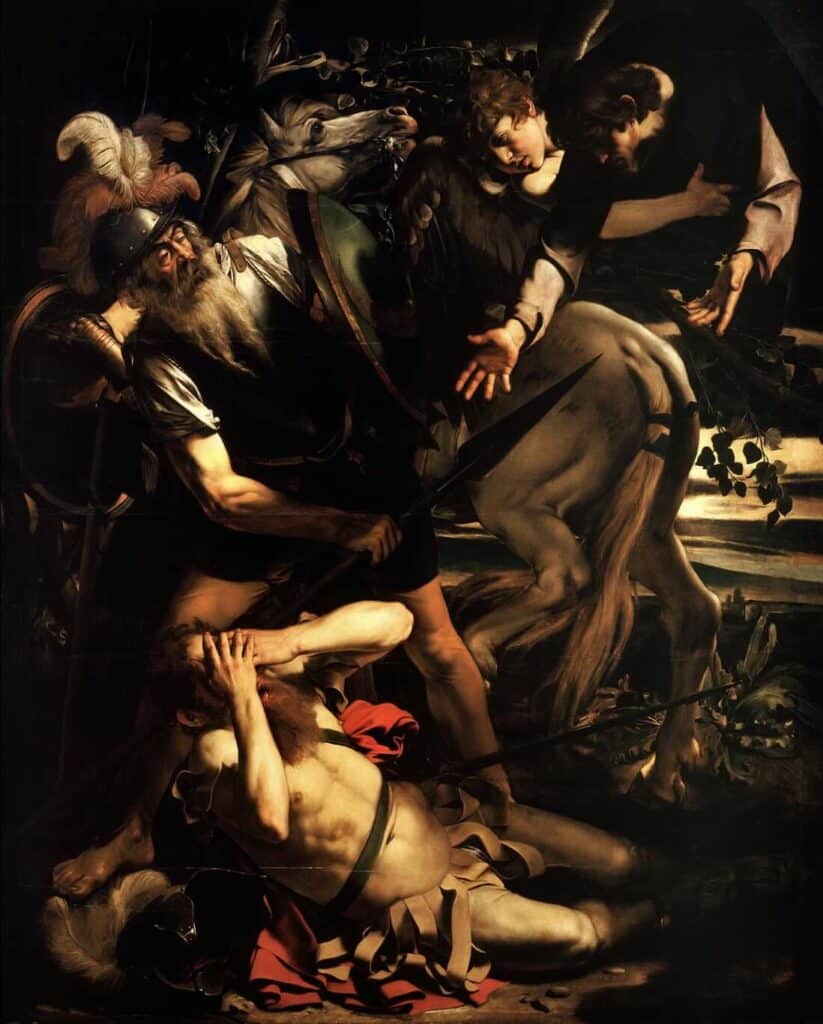
Why it matters: The spiritual is rendered through raw emotion. Caravaggio places the viewer in the dirt alongside Paul, who lies blinded and overwhelmed by divine light.
David with the Head of Goliath (1610)
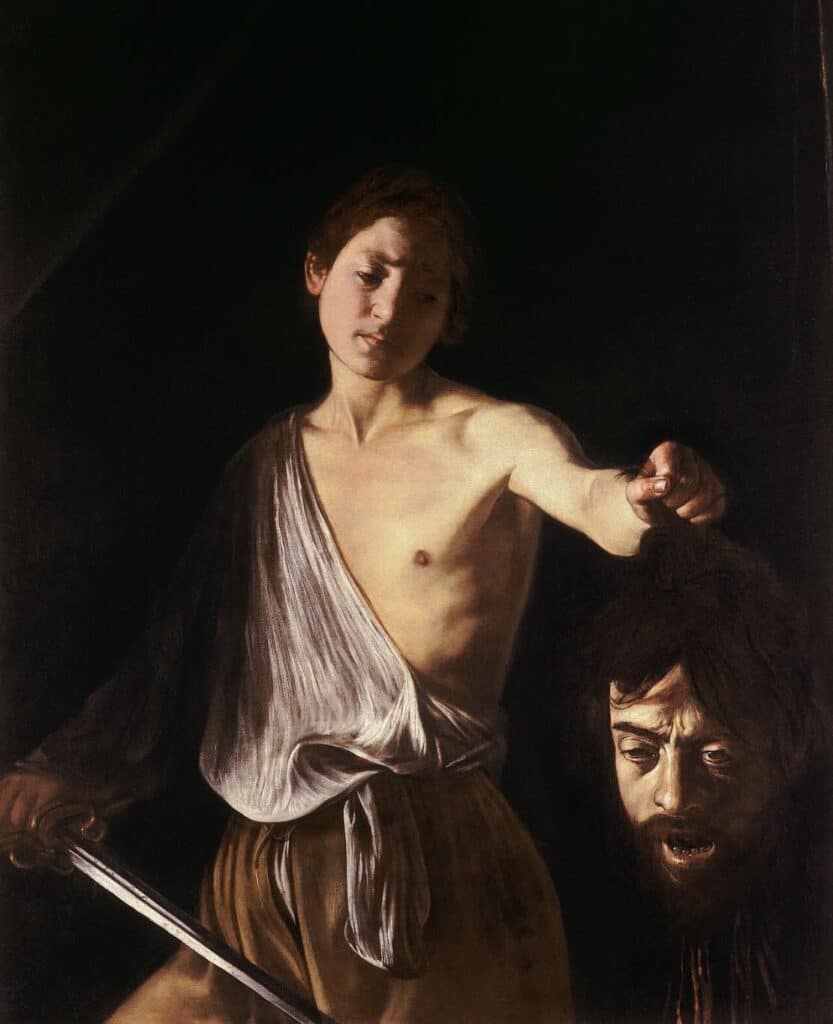
Why it matters: Painted near the end of his life, Caravaggio used his face for the severed head of Goliath, turning the painting into a haunting meditation on guilt and mortality.
The Entombment of Christ (1603–1604)
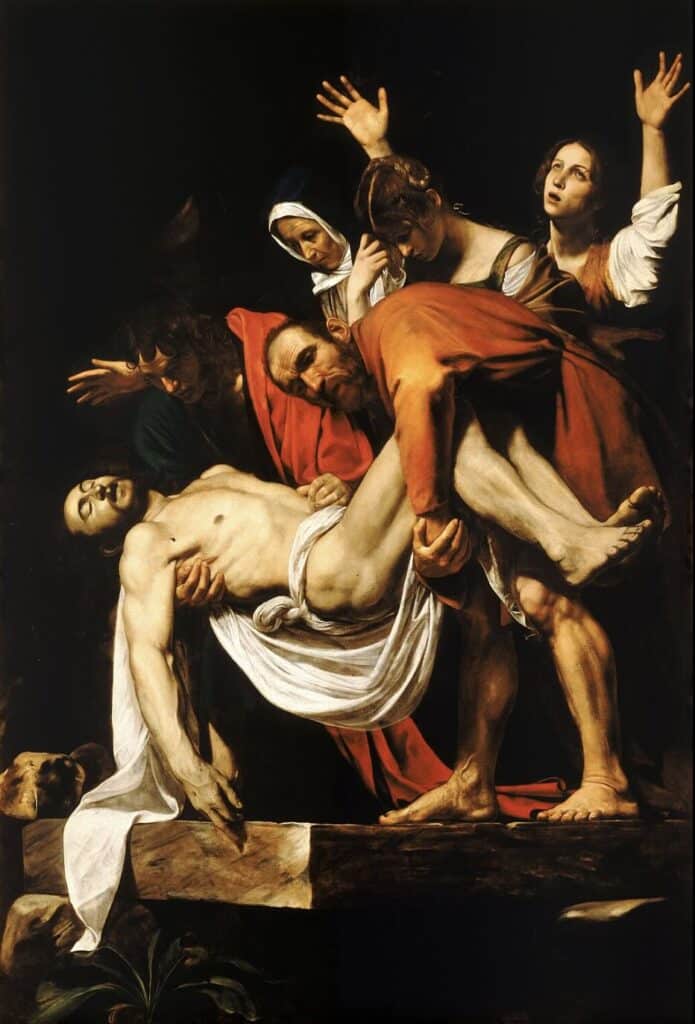
Why it matters: A powerful portrayal of grief and gravity, this painting captures the raw physicality of death and the burden of loss.
Saint Jerome Writing (1605–1606)
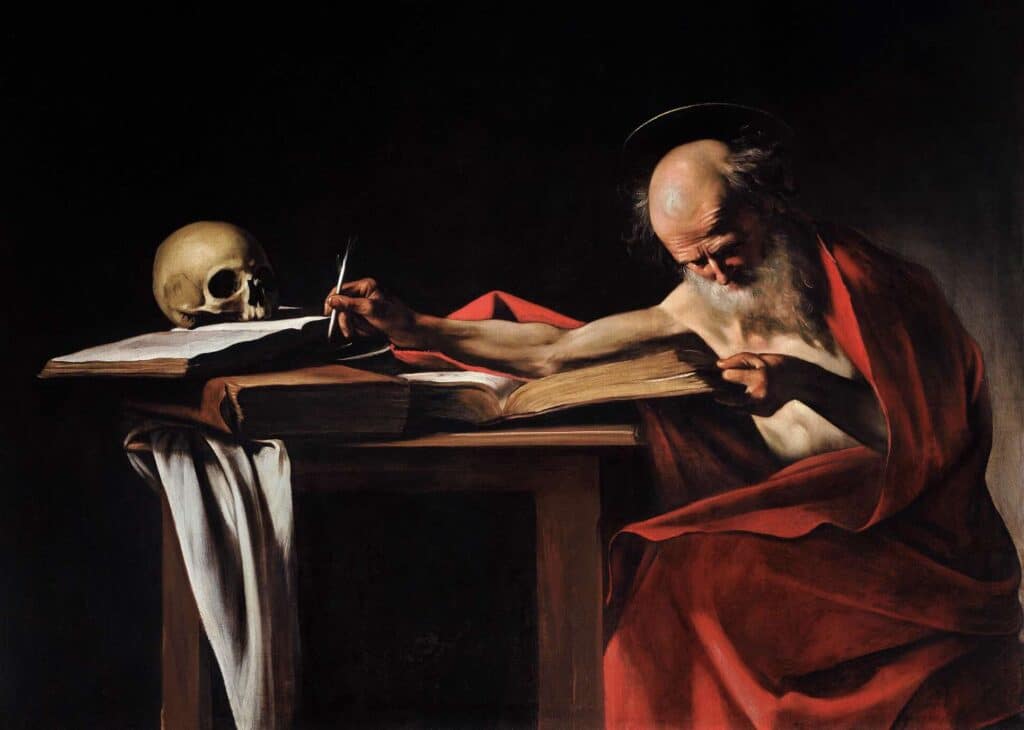
Why it matters: This quiet, contemplative image contrasts with his more violent works and shows Caravaggio’s range. The aging saint is rendered with intense realism.
The Seven Works of Mercy (1607)
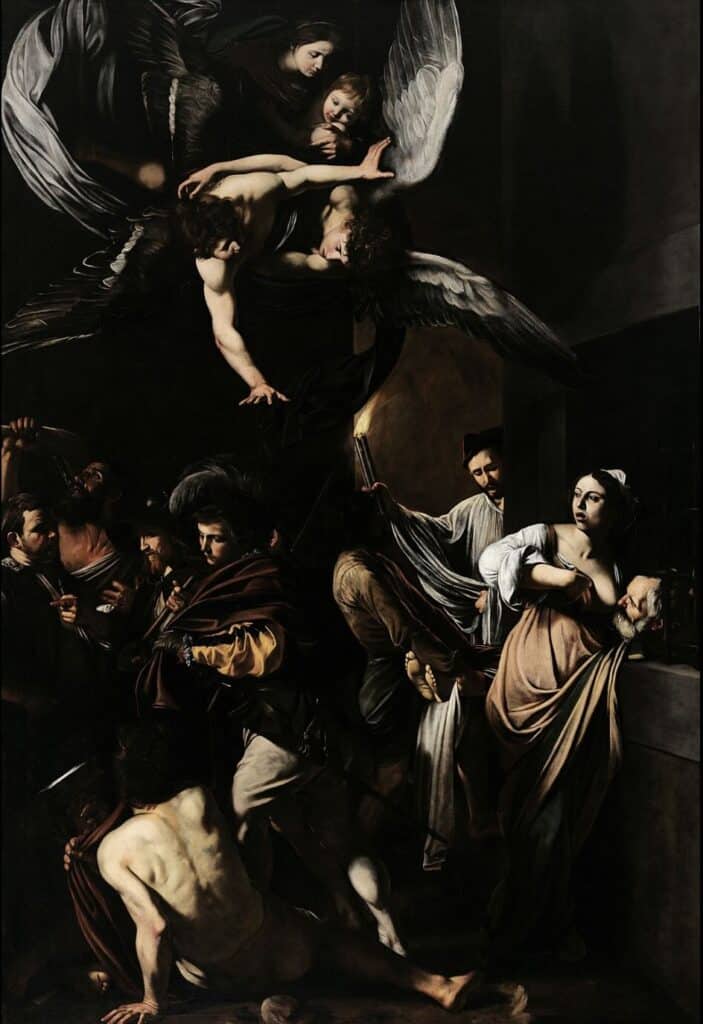
Why it matters: A complex composition showing acts of compassion in one chaotic, crowded scene, it captures the messy, tangled nature of human charity.
Medusa (1597)
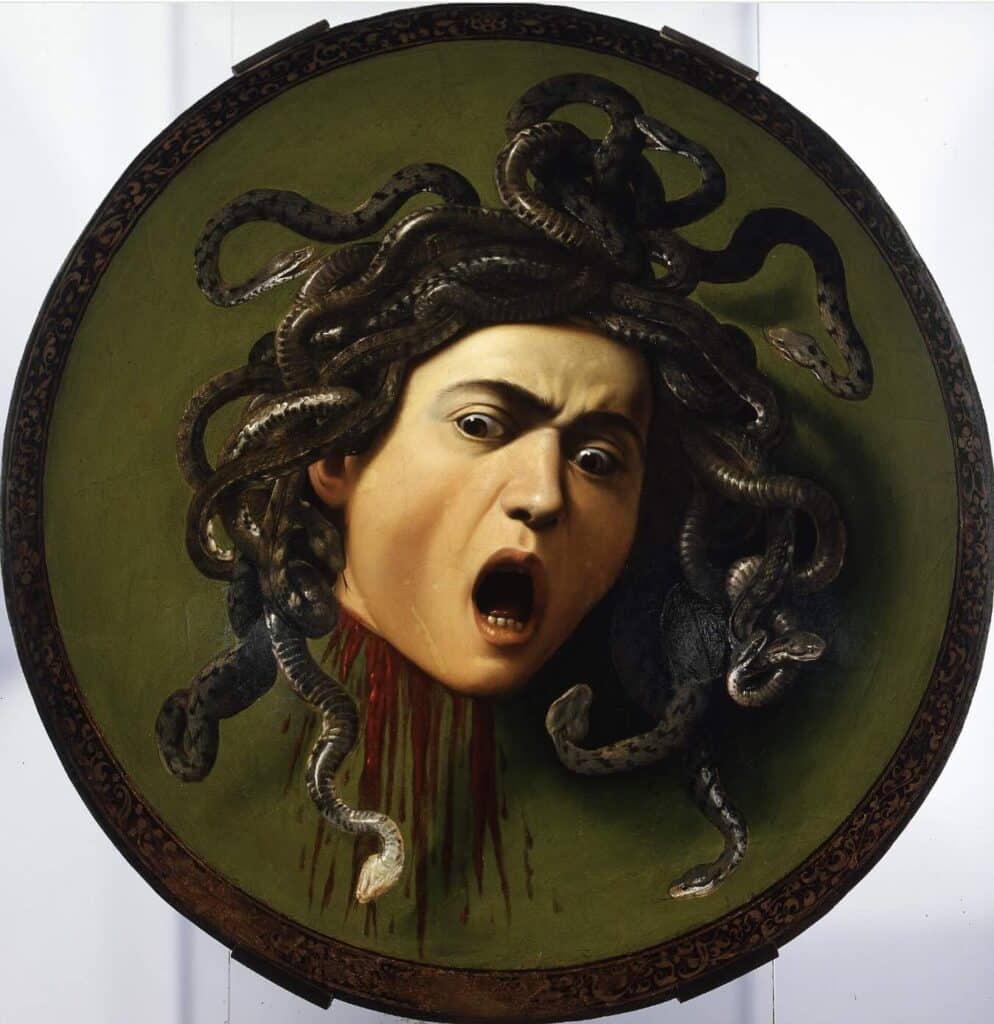
Why it matters: Painted on a convex shield, Medusa is both a portrait and a symbol. It captures terror, beauty, and myth in a single, unforgettable image.
Caravaggio lived like his art: intense, dangerous, and unforgettable. He changed the rules of painting, dragged sacred imagery into the streets, and gave voice to the unvarnished truth of the human experience. His legacy lives not only in museums but in every artist who dares to tell the raw, real story of what it means to be alive.
His life may have been short, but his shadow is long. And in that shadow, his light still burns.
Anita Louise Art is dedicated to art education, great artists, and inspiring others to find and create their art. We love art that uplifts and inspires. #ArtToMakeYouSmile! #ArtToMakeYouHappy!
If you want to see any of my art, you can find out more by clicking here. If you are interested in what inspires me and my paintings, you can discover more by clicking here.
We have a free newsletter and would love you to be part of our community; you can subscribe to the newsletter by clicking here. If you have any questions, I would be happy to talk to you anytime. You can reach me, Anita, by clicking here.
Subscribe to our Anita Louise Art YouTube Channel with great videos and information by clicking here.
Join us for our podcast “5 Minutes With Art.” Spend just 5 minutes a week with us to discover and learn about great art and artists. You can find out more about our podcast by clicking here.
Related Questions
The Timeless Beauty of Caravaggio: Master of Light and Shadow
Caravaggio’s innovative use of light and shadow, known as chiaroscuro, set him apart from his contemporaries and paved the way for future generations of artists. His powerful, often controversial works were marked by dramatic realism and emotional intensity that continues to captivate art lovers and inspire creators to this day. Read on as we will explore how Caravaggio revolutionized art through his mastery of light and shadow, cementing a legacy that remains vibrant more than 400 years after his time.
By clicking here, you can learn more by reading The Timeless Beauty of Caravaggio: Master of Light and Shadow.
.
Caravaggio: The Master Of Light And Dark
Caravaggio’s innovative approach to chiaroscuro revolutionized the art world, creating dramatic contrasts that brought his subjects to life with unprecedented realism and emotional depth. Caravaggio’s pioneering use of chiaroscuro distinguished his work and left a profound and lasting impact on future generations of artists. His ability to manipulate light and shadow with such precision and effect earned him the reputation of a true master, influencing countless artists and shaping the course of art history.
By clicking here, you can learn more by reading Caravaggio: The Master Of Light And Dark.
Caravaggio: The Bad Boy Of Art And His Lasting Impact
Caravaggio is not an artist without controversy. He has earned the moniker “the Bad Boy of Art” for his tumultuous life and rebellious nature. Despite his controversial lifestyle, Caravaggio’s contributions to art were groundbreaking, and his mastery of chiaroscuro revolutionized how light and shadow were used in painting. Read on as we explore Caravaggio’s life, artistic innovations, and enduring legacy.
By clicking here, you can learn more by reading Caravaggio: The Bad Boy Of Art And His Lasting Impact.

